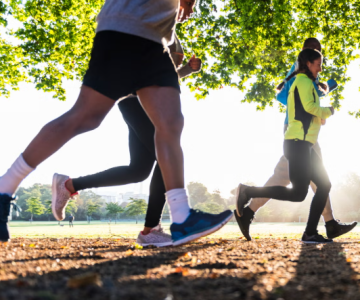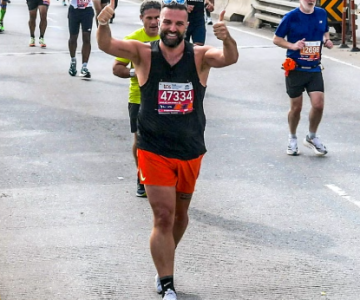Running shoes have come a long way over the years, from clunky leather designs to the modern, lightweight options filled with advanced materials like carbon fiber and foam. The focus on shoe weight has been a big part of running culture, with many athletes trying to find ways to cut down on shoe weight in hopes of shaving seconds off their race times. But how much lighter should your shoes be for optimal performance?
The Impact of Shoe Weight on Performance
As a runner, I’ve seen firsthand how shoe weight can impact your run. When I started running in the 1980s, the shoe industry was going through a revolution. The emphasis back then, especially for elite runners, was on making shoes as lightweight as possible. In fact, Bill Bowerman, a renowned coach and Nike co-founder, famously said, “Removing one ounce (28 g) from a shoe… would translate in a reduction of 55 pounds (25 kg) of lift over a one-mile span.”
Research supports this. A study from the University of Colorado Boulder revealed that adding just 100 grams (3.5 ounces) to running shoes could increase the aerobic demand of running by 1%, ultimately slowing down race times.
Lightweight Running Shoes Stats
For those looking to shed some weight from their footwear, here’s a list of some of the lightest running shoes on the market in 2025:
- Nike Streakfly 2 Proto: 133g (4.6 oz) – Ideal for 5K–10K races
- Nike Streakfly 2: 145g (5.1 oz) – Great for 5K–10K races
- Nike Vaporfly 4: 148g (5.2 oz) – Road racing (with carbon plate)
- On Cloudboom Strike LS: 170g (6 oz) – Road racing (with carbon plate)
- ASICS Metaspeed Sky Paris: 185g (6.5 oz) – Carbon marathon racer
- Saucony Endorphin Elite 2: 199g (7.0 oz) – Carbon super shoe
- Saucony Kinvara 15: 200g (7.0 oz) – Lightweight daily trainer
- Nike Vaporfly 3: 200g (7.1 oz) – Carbon marathon racer
- HOKA Bondi 8: 307g (10.8 oz) – Maximum cushioning for stability
These models offer lightweight options ranging from race-day specialists to trainers designed for everyday runs.
What the Science Says
Studies examining the effect of shoe weight on running efficiency consistently show that lighter shoes can enhance performance. One study found that adding 100 grams per shoe negatively impacted running efficiency, leading to slower times. Lighter footwear reduces energy expenditure, making it easier to run faster without burning through your energy reserves.
That being said, balance is key. While lighter shoes can improve performance, they shouldn’t sacrifice cushioning or support, which are essential for preventing injuries.
My Thoughts on Lightweight Running Shoes
As much as lighter shoes can make you feel faster, they’re not necessarily the best choice for everyone. Elite runners often opt for lightweight shoes because their stride and foot placement are suited for that type of footwear. But for many recreational runners, lighter shoes might not offer the support and cushioning needed for safe and comfortable runs.
I’ve had personal success with lighter shoes, such as the New Balance RC1400 (weighing 6.2 oz / 176g), which helped me set a 5K personal best. But remember, what works for one runner may not work for another. If you’re heavier or have specific support needs, a lightweight shoe may not be ideal. A firmer or more stable option might be a better fit to reduce the risk of injury.
Factors to Consider When Choosing Your Running Shoes
- Age: As we get older, our bodies take longer to recover, and we may need more support to prevent injury.
- Weight: Heavier runners may require firmer shoes with more cushioning to provide adequate support.
- Pace: Are you racing, or are you just running for fun? Faster runners may benefit more from lighter shoes, but casual runners might need more cushioning.
- Injury Risk: If you’ve been prone to injuries, consider whether a super-light shoe might increase your risk, especially if it’s too neutral or lacks support.
Other Important Shoe Features
- Stack Height: Many light shoes still have a thicker stack, providing cushioning but not as much as a high-drop shoe.
- Drop: The drop refers to the difference in height between the heel and the forefoot. Some lighter shoes have a low drop, which might be a departure from what you’re used to.
- Carbon Fiber: Some lightweight shoes incorporate carbon fiber plates for energy return, but these can change the feel of the shoe. Be sure to try them out before committing.
- Fit: Even the lightest shoes must fit properly. A snug fit, not too tight or loose, is essential for comfort.
Summary
The lighter your running shoe, the more speed you may feel, but it’s not always the best fit for every runner. Whether you’re aiming for race-day speed or everyday comfort, consider your individual needs—such as support, cushioning, and injury risk—before selecting a shoe.
If you’re looking for a lighter shoe that still provides the necessary support, try models like the Saucony Kinvara or the Nike Vaporfly, which balance speed and comfort. Just remember to keep fit and support in mind—sometimes less weight can mean less stability.
Fitting Tips for Running Shoes
- Ensure the shoe fits snugly but comfortably, with room for your toes when standing.
- Pay attention to how the shoe feels on your foot—especially if you have a high instep or wide feet.
- There should be no “break-in” period; a properly fitted shoe should feel comfortable right away.
Lightweight shoes can make a significant difference in how you feel on your runs. So, choose carefully and enjoy the lighter, faster feeling that comes with the right shoe!




